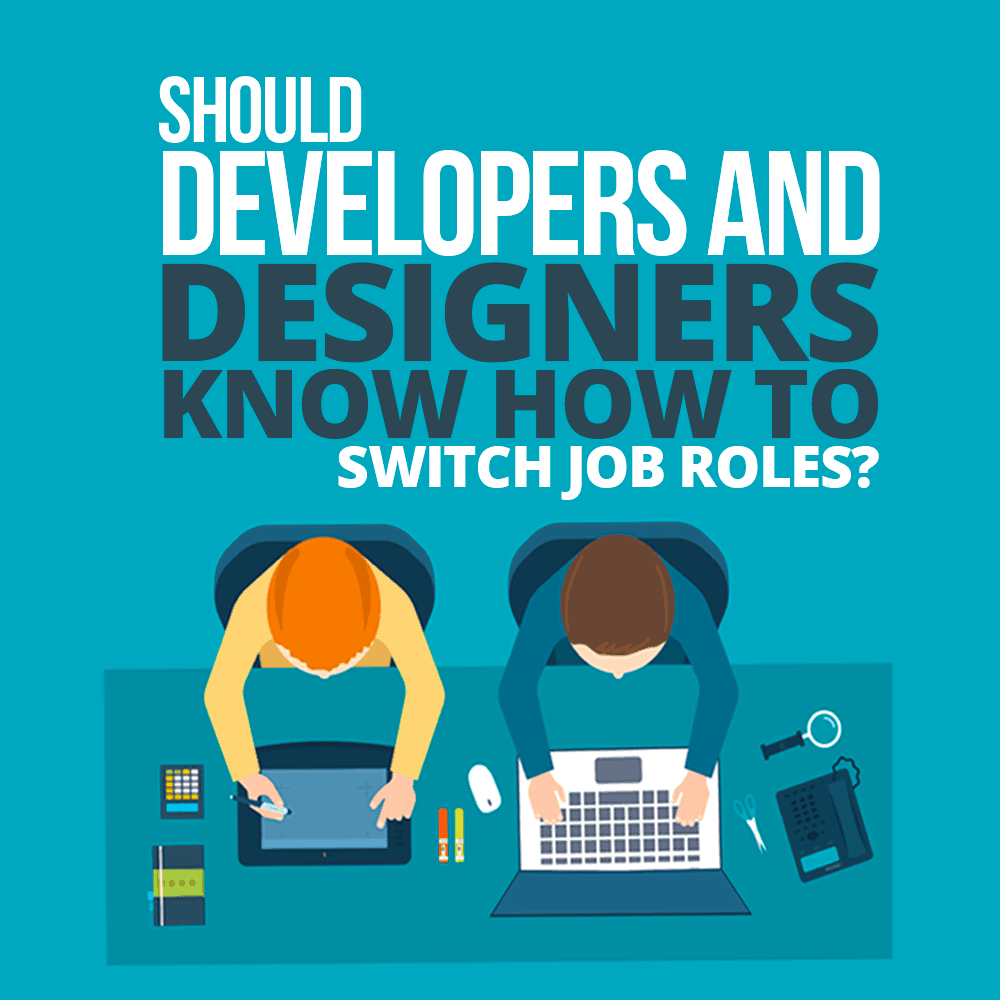
Let’s end the discussion once and for all, and explore who should know how to switch roles.
Developers vs. Designers
Developers are specialized programmers, developing robust web and mobile products using different technologies, while designers control the design aspects, such as layout, color scheme, font size, and so on. Each is a master of a different art.
Designers are expected to know basic coding, if not complex development, but less is talked about developers designing. This is because of some misconceptions about the two positions that should be cleared up.
For example, people believe development is more of a technical role that one can learn through formal education, online courses, professional experience, and so on. On the other hand, people assume design to be an art form that very few people can master.
Therefore, designers are encouraged to learn development, but designing is considered difficult for developers, as it requires a natural flare.
Yes, some people have a better and natural understanding of colors, color combinations, and designs. Others need to follow design rules and techniques to develop an acceptable design piece. But both skills are equally acquirable. Period.
Why Should Designers Learn to Code?
Companies value designers who understand JavaScript, CSS, and HTML, as that knowledge bridges the gap between designers and developers. Understanding basic coding and development helps designers know the developers’ limitations.
For example, designers may ask for features that would disrupt the overall flow of the website or mobile app. Knowing coding enables designers to predict potential bugs and to design accordingly.
Having a grasp of coding allows designers to quickly and comfortably communicate the designs to respective developers. It also allows designers to address concerns beforehand by discussing the potential problems arising from changes in design or interfaces.
Understanding coding and development lets the designer consider various important factors such as code maintenance and complexity that can otherwise affect product functionality and sustainability.
We are not asking designers to learn complicated coding and development. But understanding the fundamentals will improve their designs and enable effective designing across platforms.
Why Should Developers Learn to Design?
“Design transcends agenda. It speaks to the politics of optimism.” — Paul Bennett, Chief Creative Officer for IDEO
Good design enhances the efficiency of a website or mobile application. People interact with the product’s design before experiencing its functionality. That means good design creates a positive first impression and encourages users to stay on the website and explore. As a developer, you must know and understand the key to user retention on the website or app: design!
Nobody is asking developers to be the main designers of a project. But an understanding of design tools and techniques, combined with basic designing skills, will enable developers to participate in creating aesthetically smart products.
Not understanding design leaves developers at the mercy of designers and often delays work for minor changes.
Good design means more website engagement, and as a developer, you must contribute to the perfection of the final product.
Let’s talk about Instagram. The social media platform had to manage design constraints and engineers to accommodate portrait and landscape modes. Designers who don’t know some development rules wouldn’t understand the limitations of including two modes. Similarly, developers won’t realize the need for including both modes.
It can be overwhelming if you lack the knowledge of the other side. But I repeat: You don’t need to learn it all, but get familiar with the basics.
Remember that the goal is not for designers to become developers or for developers to become designers. The vision is to work together efficiently.
Why Shouldn’t Designers Study Coding and Vice Versa?

Learning to code doesn’t make you a developer, nor does learning to design make you a designer. However, having even just a bit of knowledge of a complementary discipline can make you better at your own job.
So, What’s the Final Verdict?
Designers and developers solve different problems. Designers work on the aesthetics and visual appeals, while developers work on the functionality of products and implement designs. Each issue requires a different solver, and the two must focus on solving problems that fall in their respective areas of expertise.
You don’t need a formal education to learn the other person’s job. Developers should know the basic designing concepts and vice versa. The good news is that designers and developers will both eventually understand each other’s work when working together, so you’re good to go for now!
